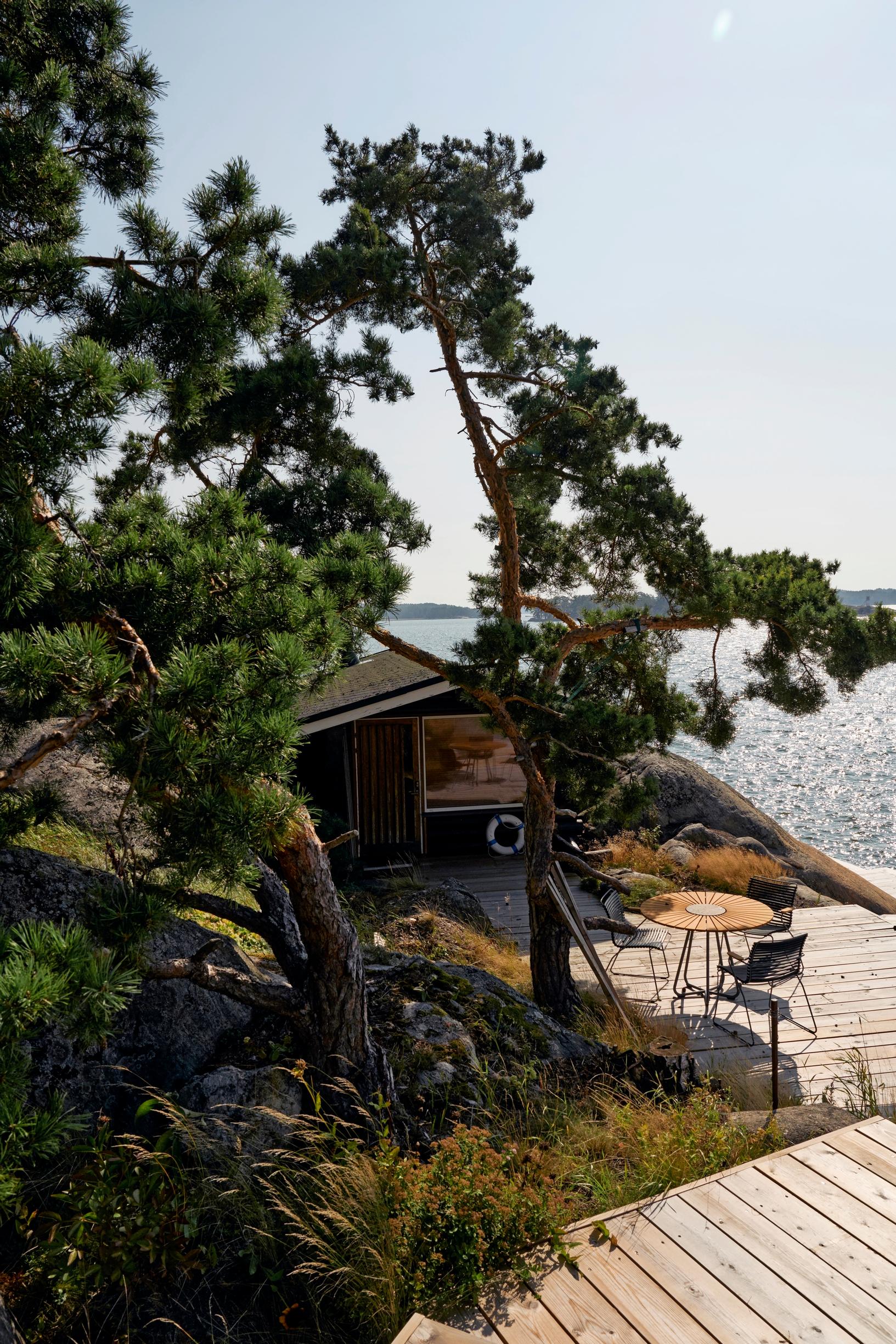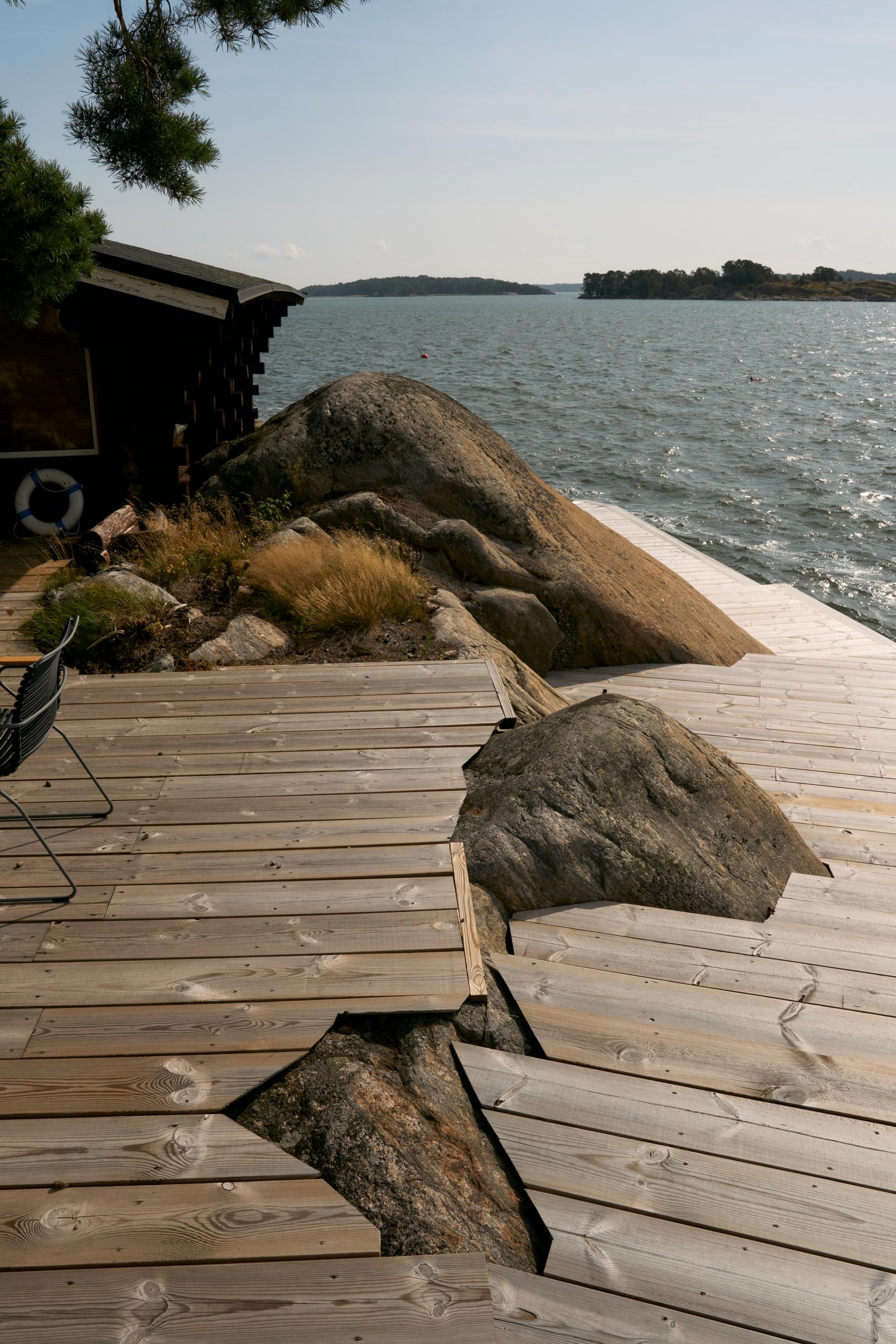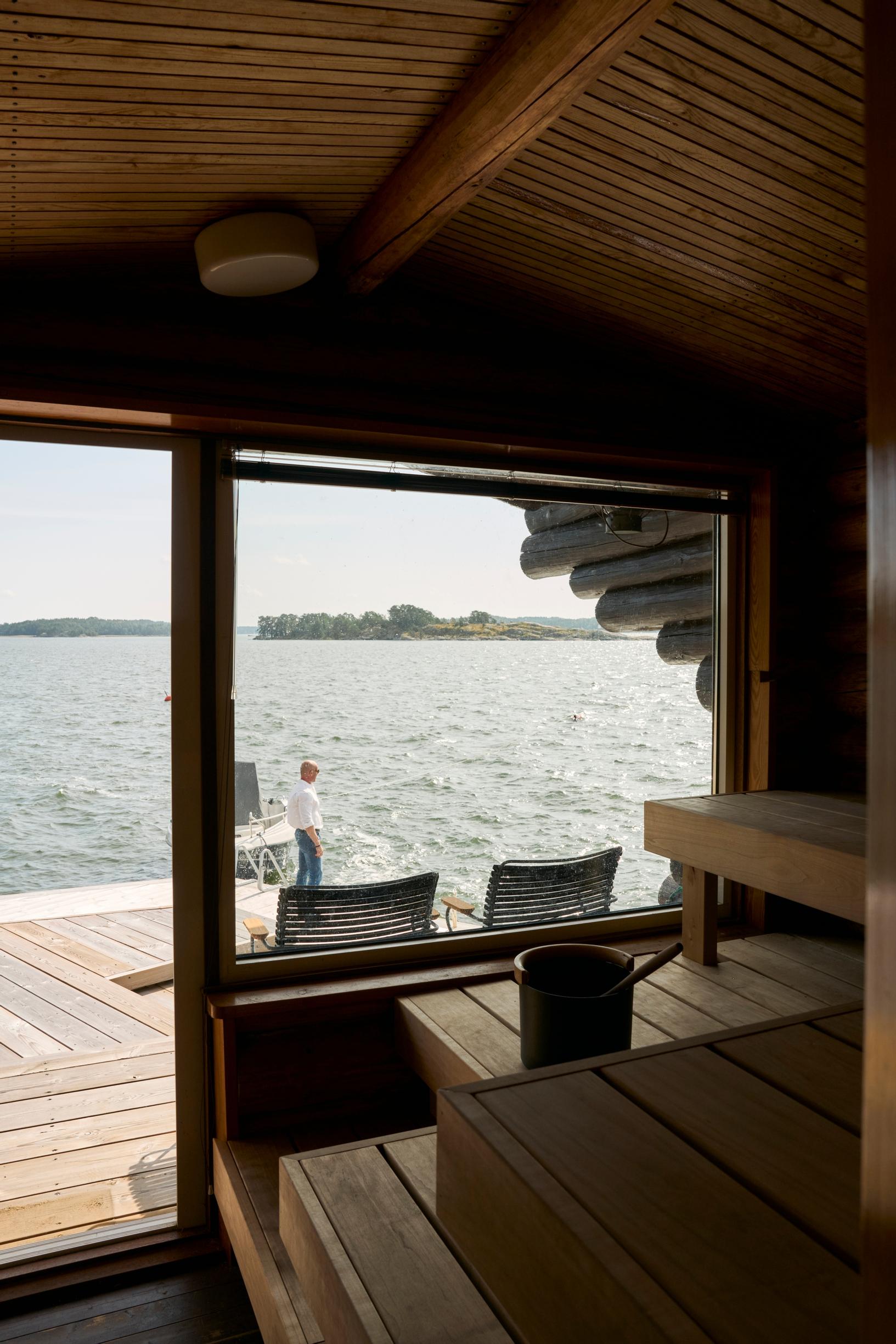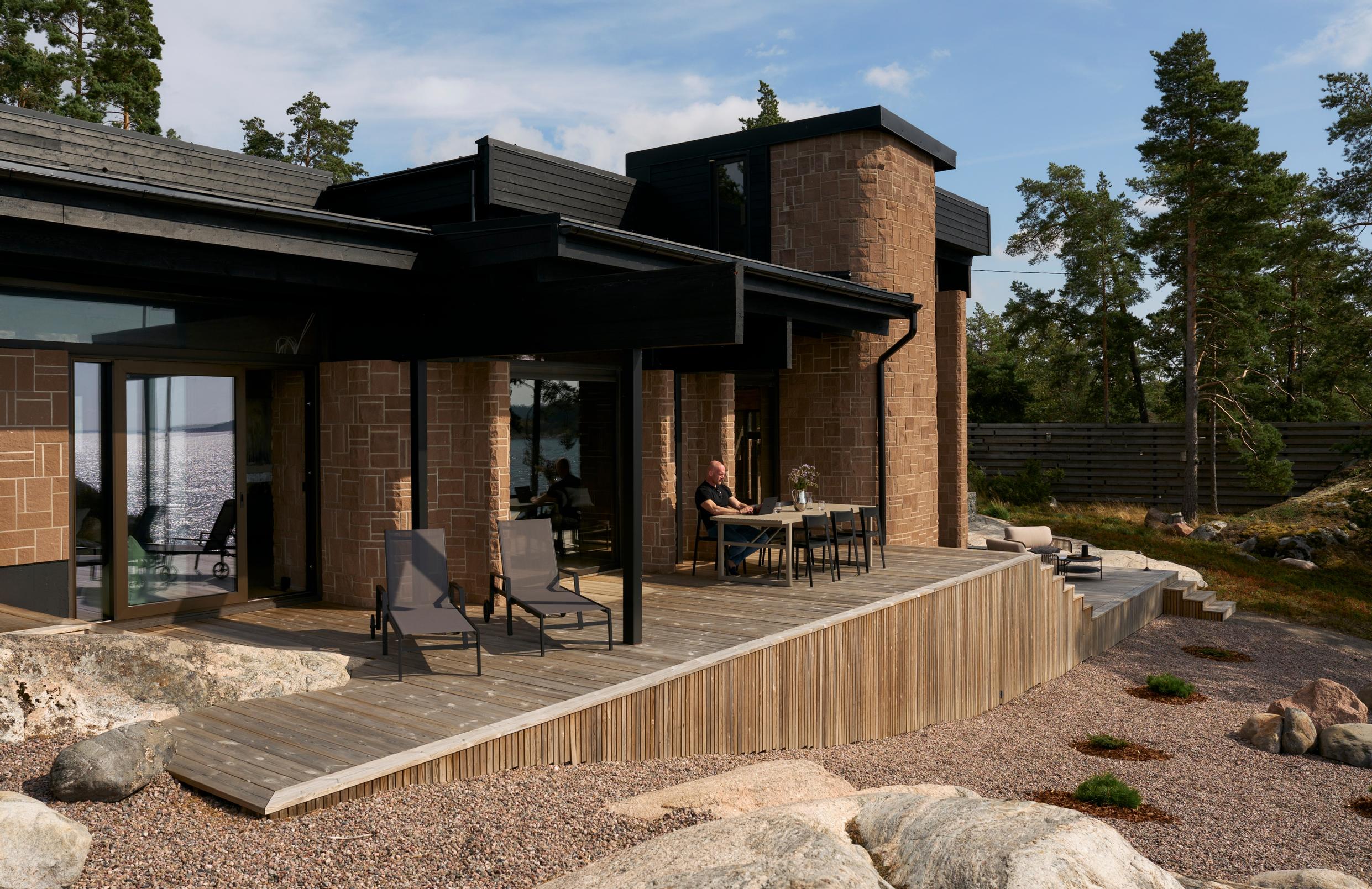
Unique villa in a rugged archipelago—Erkka’s family fell in love with the charm of a 1970s house
This seaside villa is a place for Erkka and his family to slow down, where everything falls into place and becomes simpler. “When everything is quiet around you, it’s easier to recognize what you truly need.”
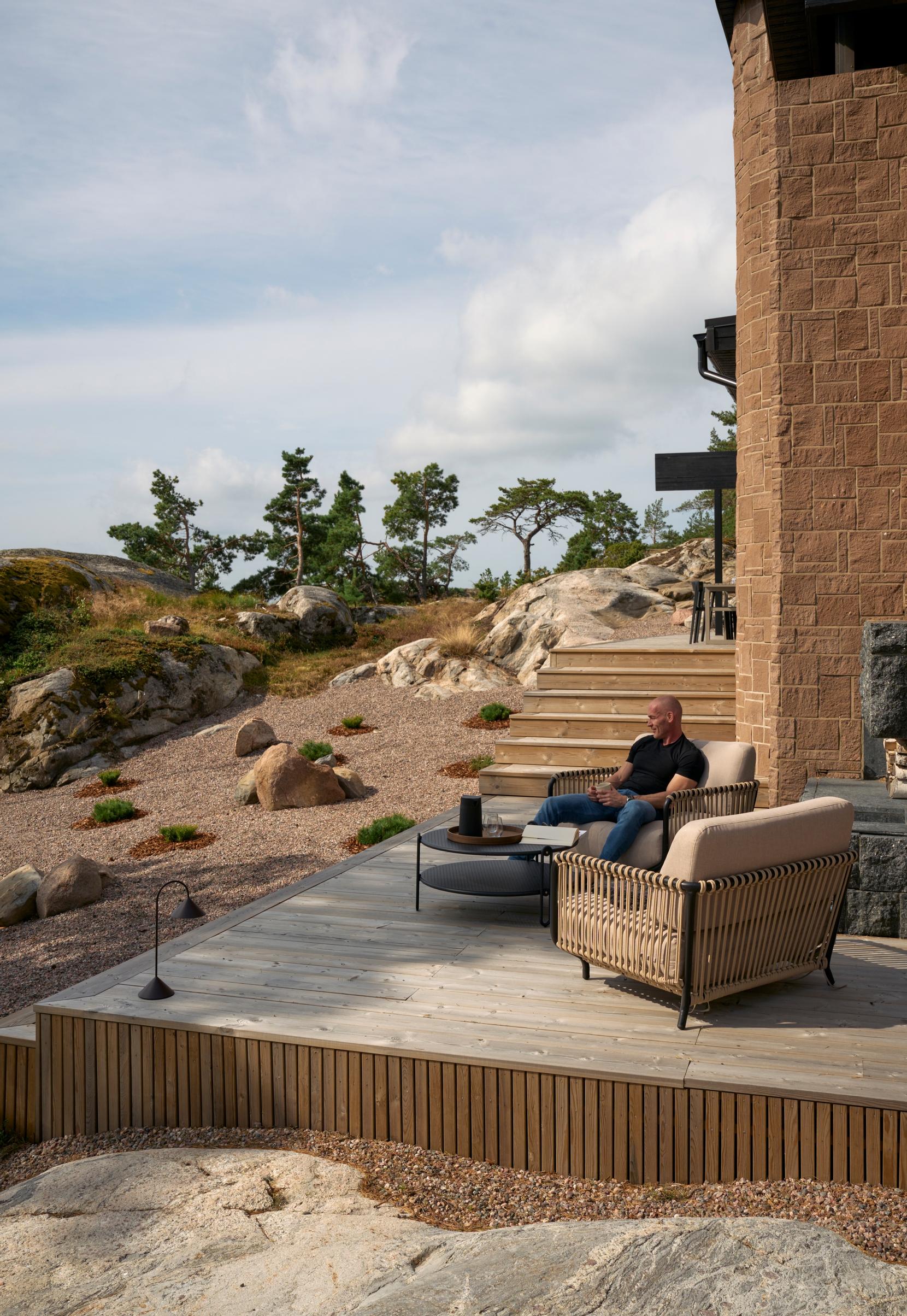
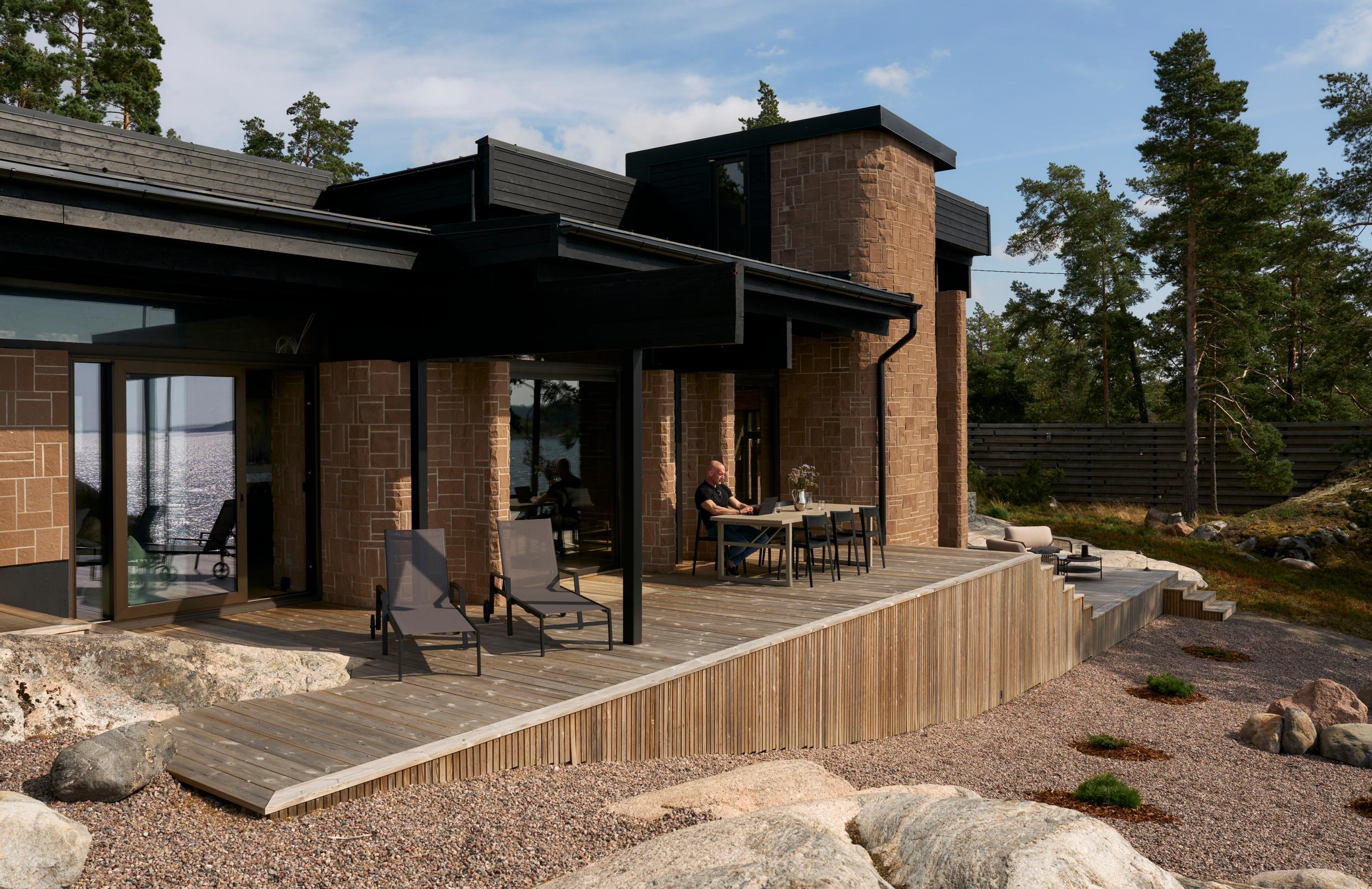
In the rocky slope of the archipelago sits a peaceful retreat, where the sea, forest, and architecture create a quiet alliance. The 1970 design by architect Sigvard Eklund is only evident up close: the dark facade blends with the pine trunks, and the terraces follow the shape of the bedrock.
A part-owner of the villa, property developer, and business coach Erkka Suvanto, discusses balance in life in his work: health, wealth, and happiness are not separate goals but part of the same whole. Here, at the vacation home shared by Erkka and two other families, that concept is brought to life.
The lot is carved into the hillside and faces south, with bedrock sloping down toward the sea. The slope is covered with woodland turf, junipers, and wind-sculpted pines. The archipelago weather is allowed to do its thing: the sun scorches the wooden surfaces, and the rain darkens the paving stones.
This is a place that greets nature—and those who know how to slow down.
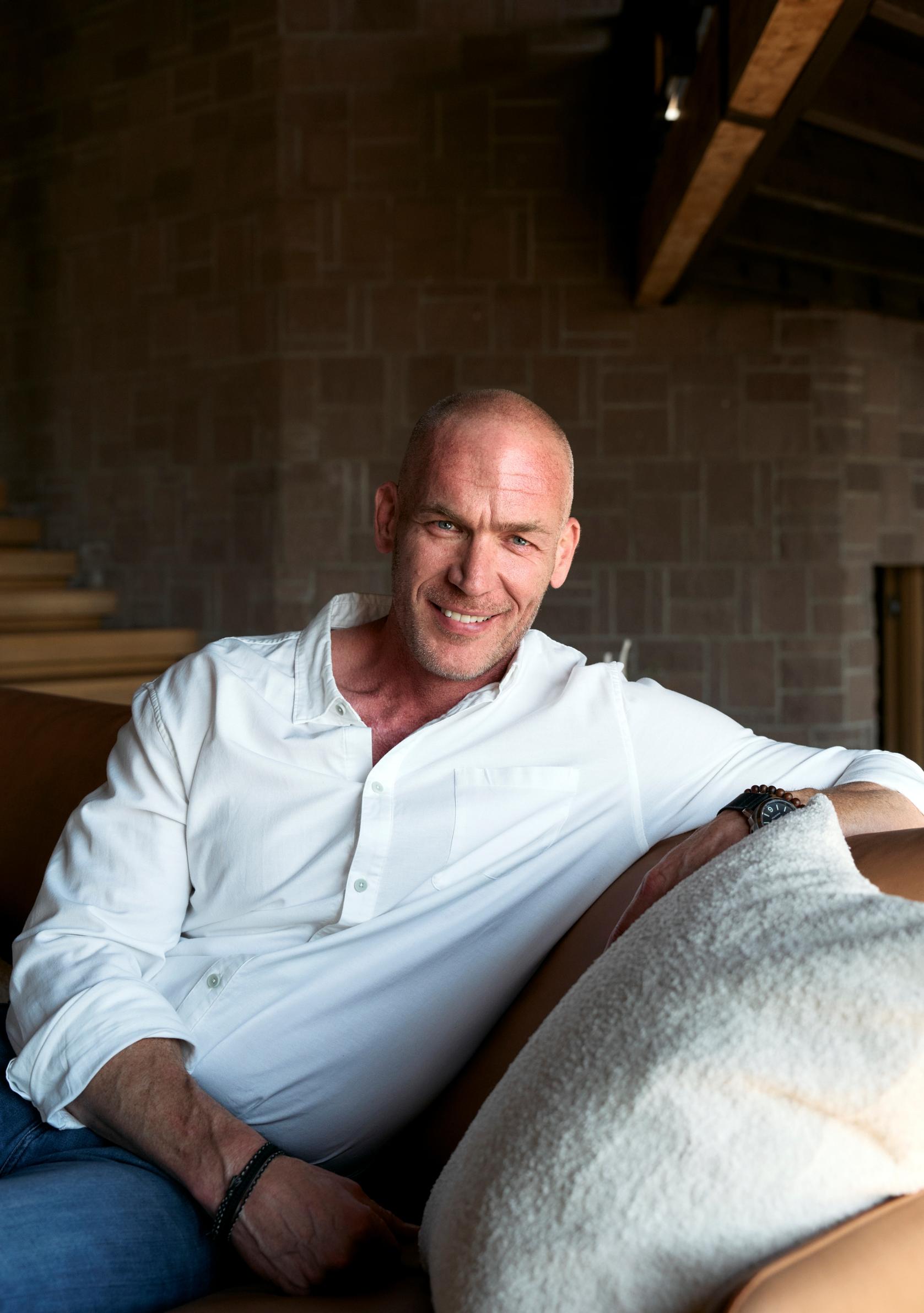
Residents Property developer and business coach Erkka Suvanto, his family, and two other co-owners.
Vacation home A villa designed by architect Sigvard Eklund in 1970 in Rymättylä, Finland, renovated from 2020 to 2024. It has about 300 square meters.
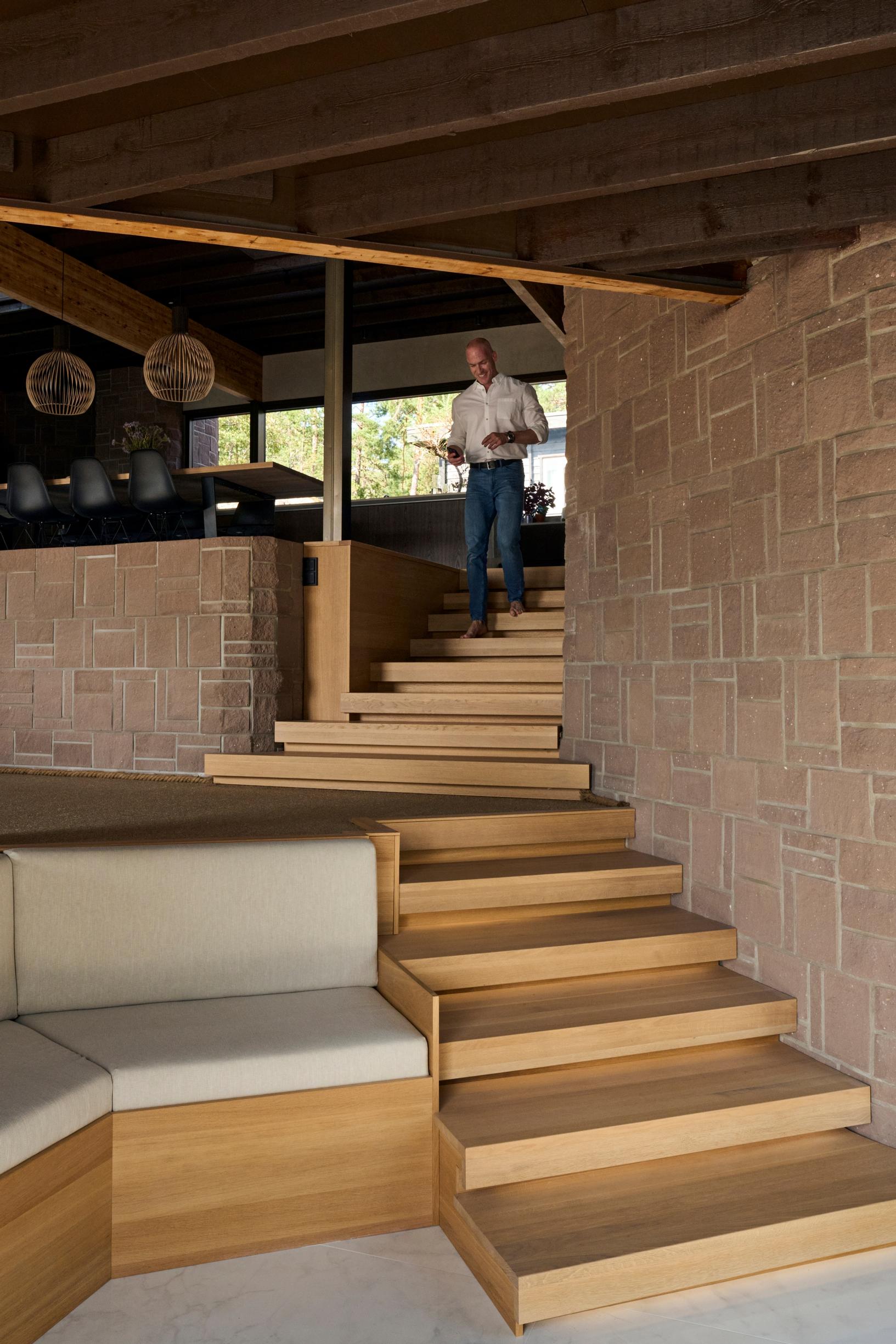
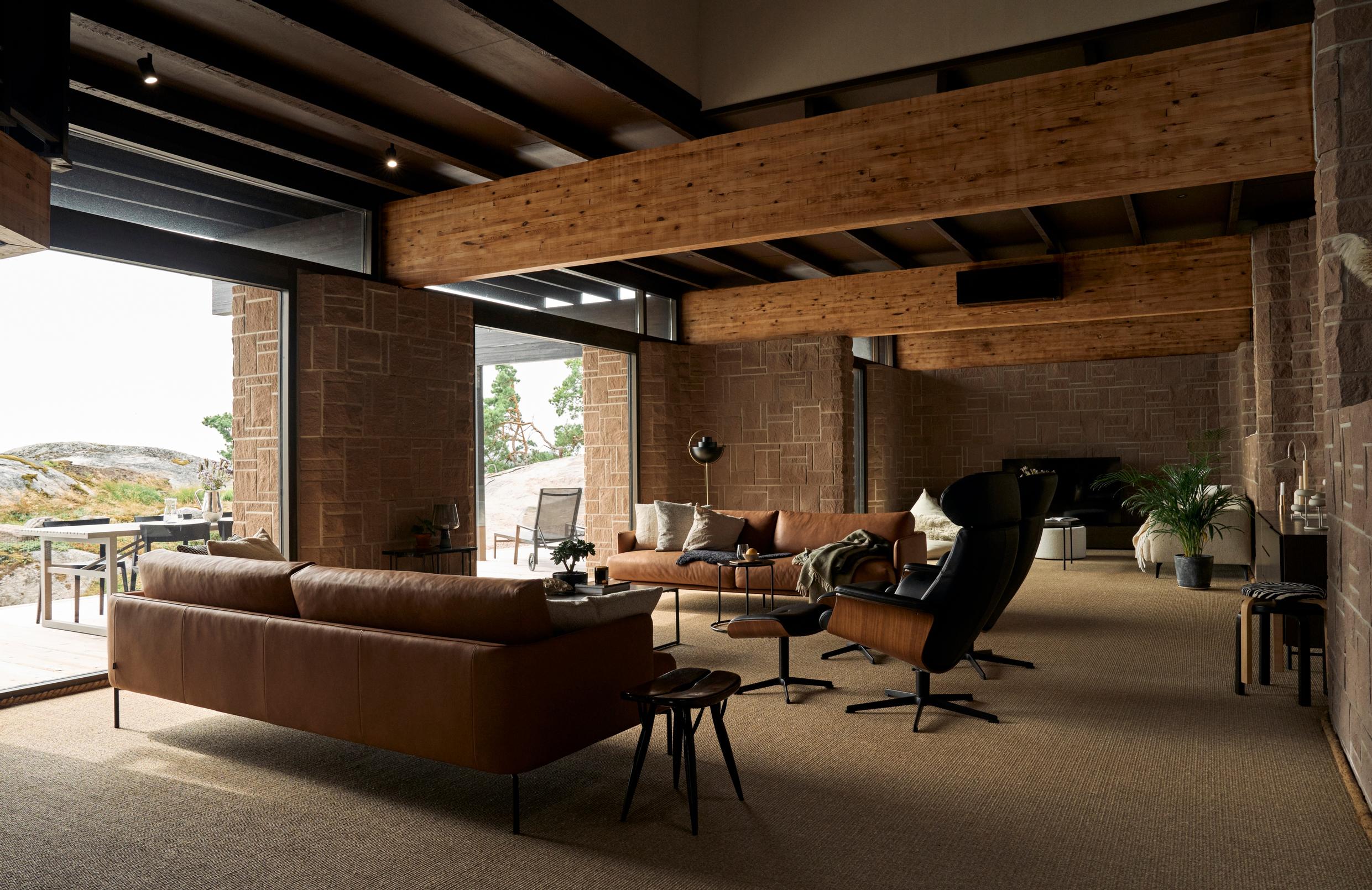
What made you fall in love with this house and its location?
I was first struck by the one-of-a-kind setting, but also by how the house’s architecture blends into the rocky landscape. The closeness of nature and the sea makes this place special. Plus, 1970s architecture brings a certain charisma that modern buildings simply can’t replicate. This property offers us the perfect combination of tranquility and nostalgia, which is so important to me and my family.
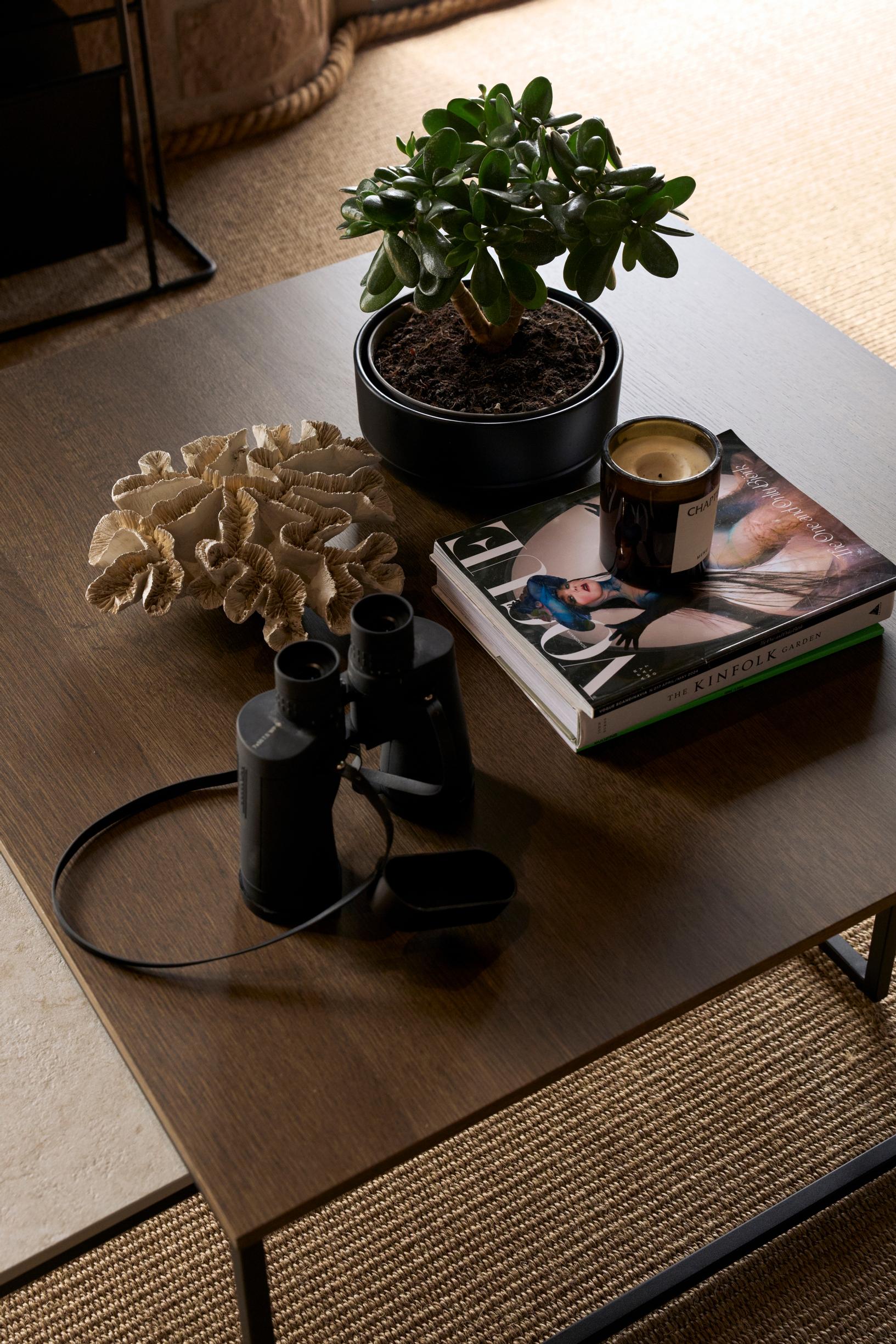
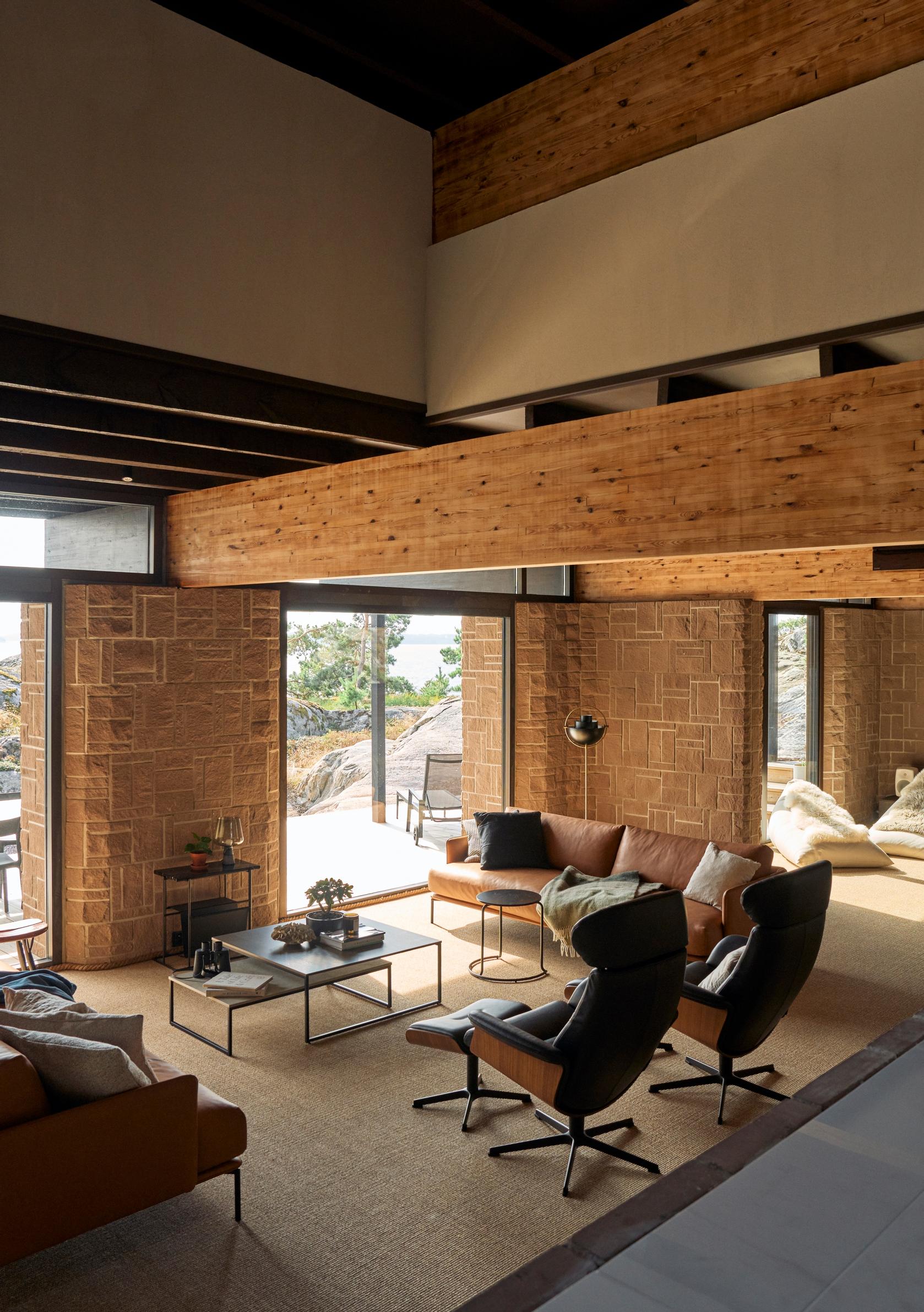
How has the house been renovated over time?
In recent years, we’ve modernized the house, but I think the original spirit is still there. We wanted to keep the original atmosphere while updating the home to be practical and functional.
Our first major project was the roof: we replaced the heavy felt roofing with a low-maintenance steel version. We also renovated the kitchen and installed underfloor heating and a heat pump. We refreshed all the surfaces throughout the house. We designed new storage solutions for the interiors, and we renovated the bathrooms, toilet areas, and sauna.
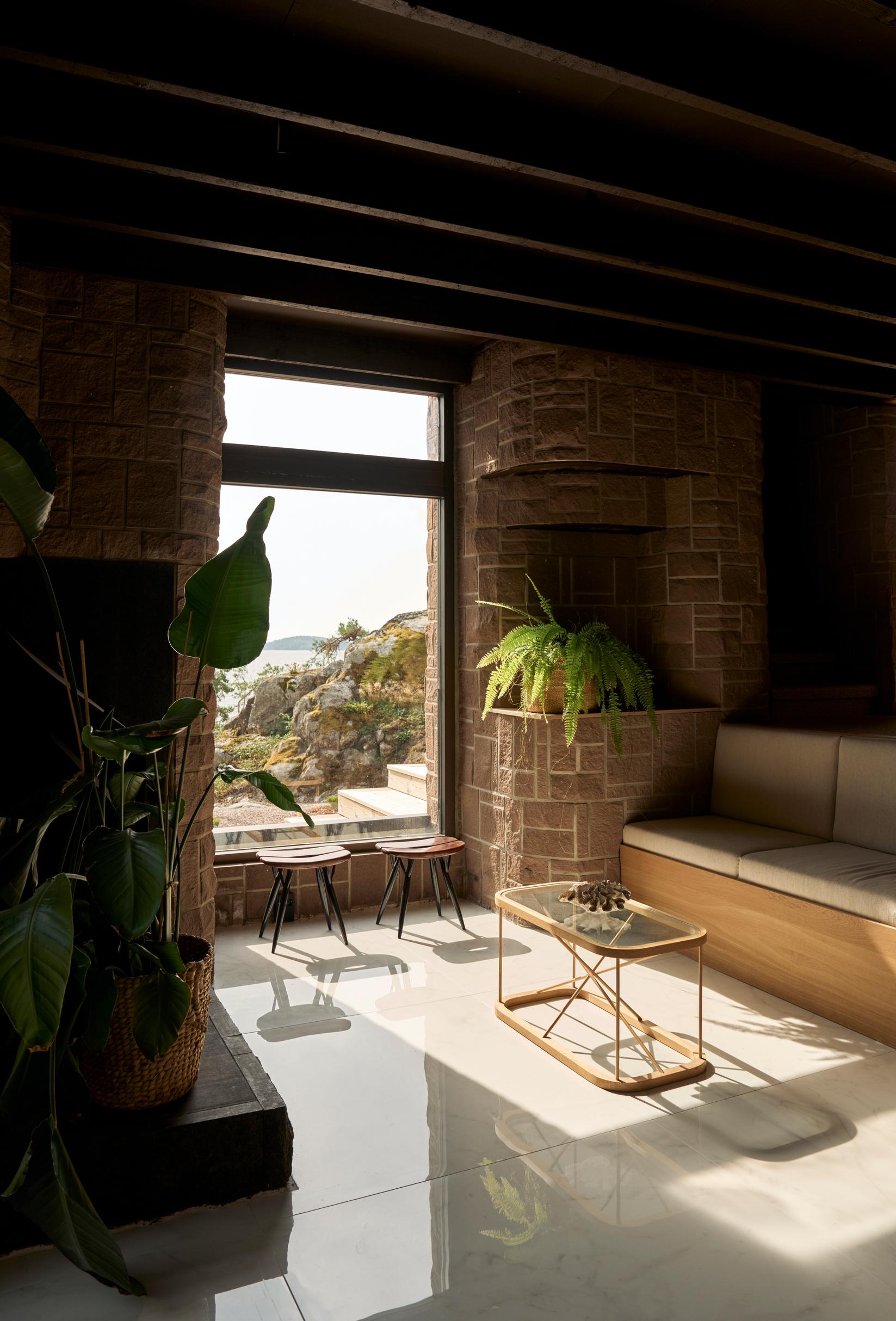
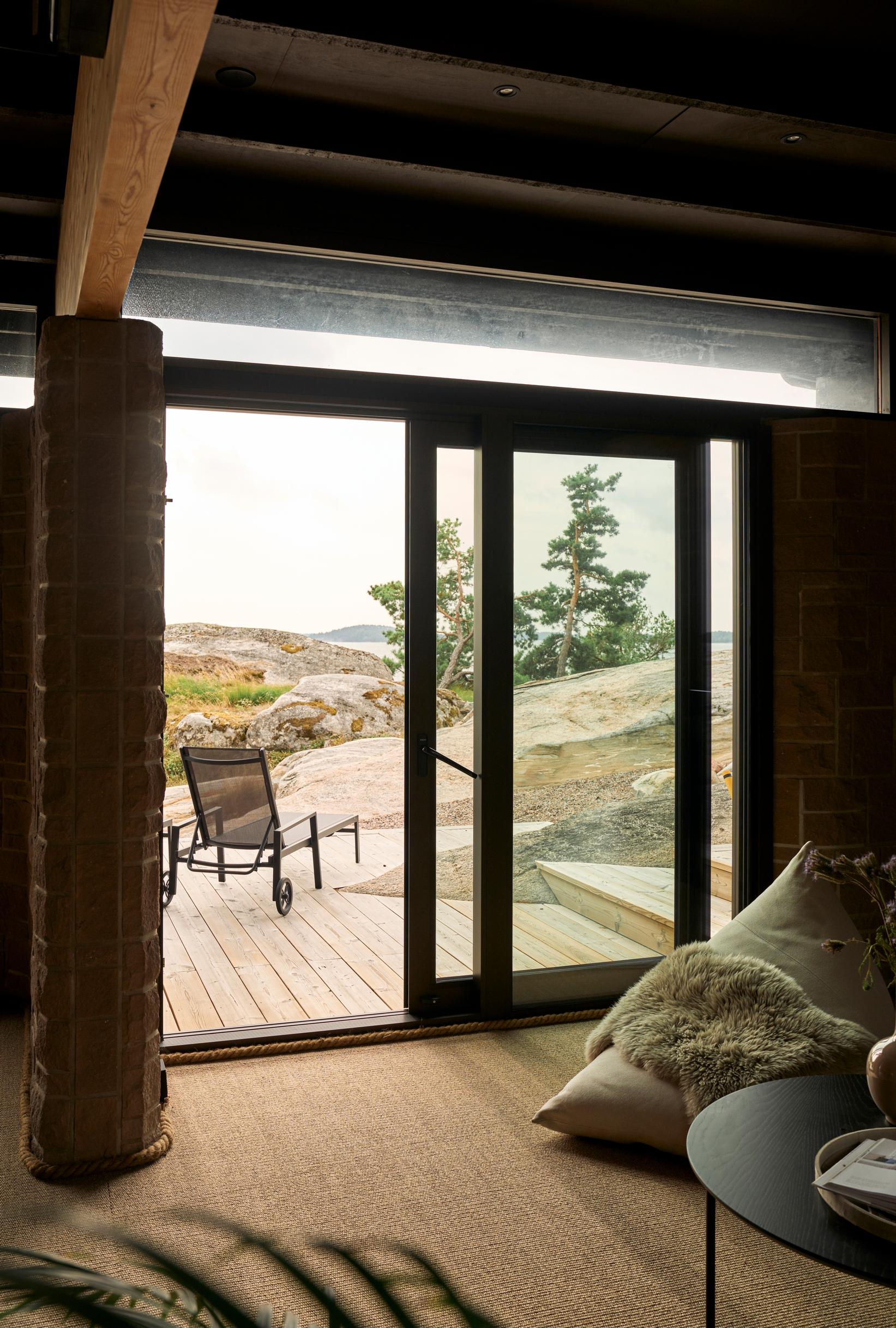
“We aimed for a cozy, peaceful space where you can truly rest.”
What was the main idea behind the new interior design plan?
We wanted to preserve the 1970s spirit but add a sense of freshness and timelessness. We used soft tones, light wooden surfaces, and natural materials in the interior: sisal carpeting, beautiful tiles, and white-waxed laminated boards.
The ceiling surfaces and our choice of materials helped improve the acoustics. The carpentry company Woode built several fixed furnishings.
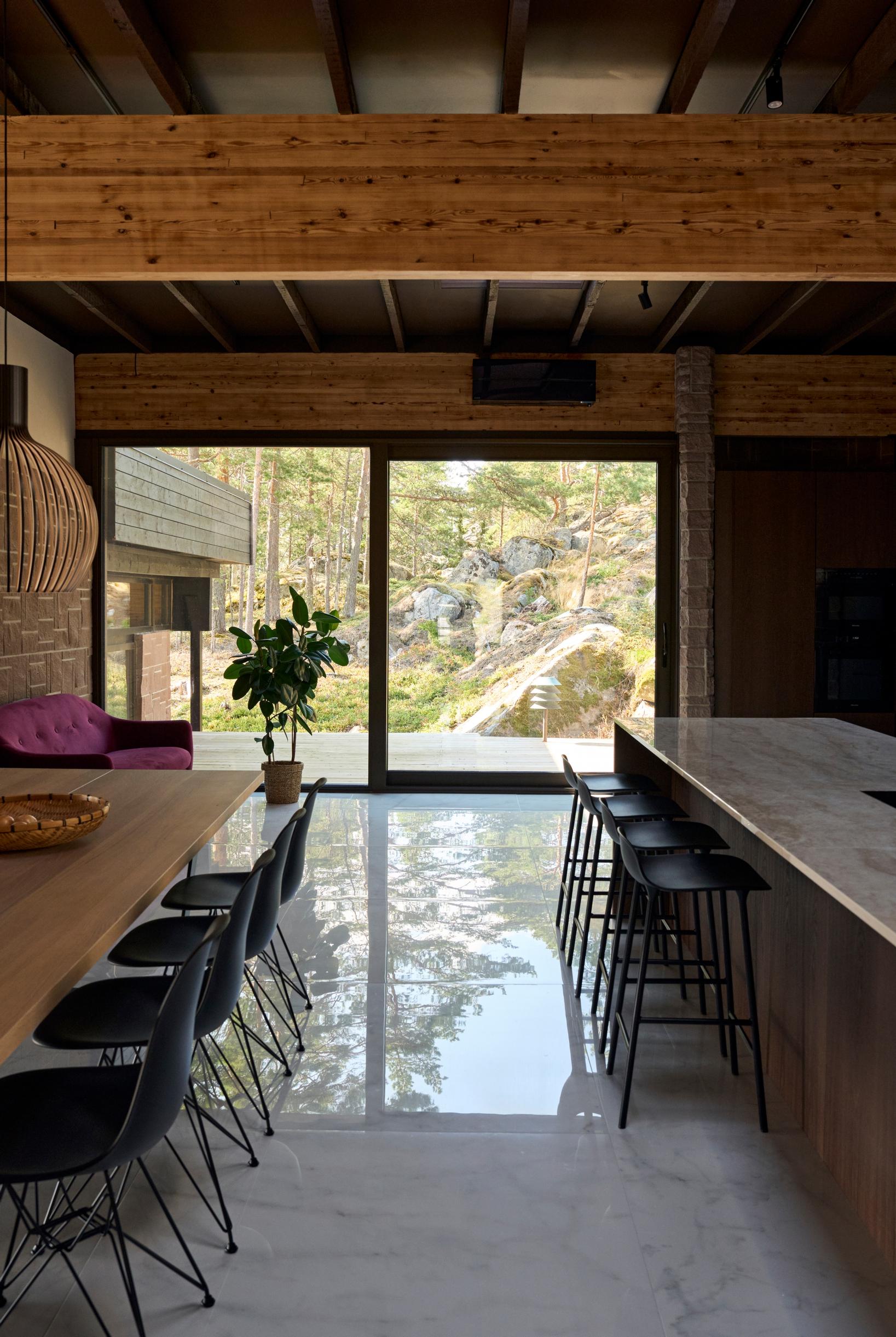
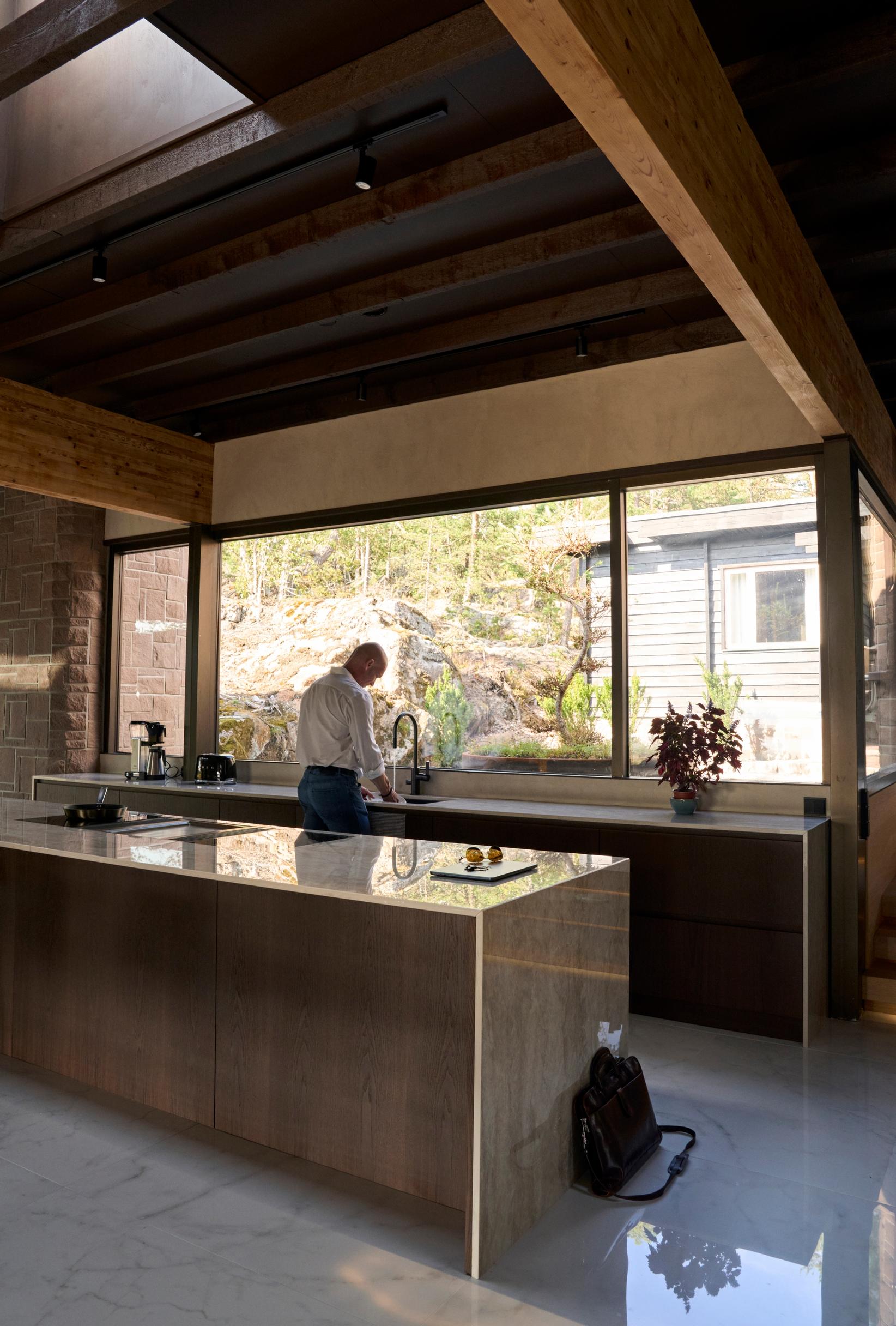
What is the house’s history?
The house was built in 1970 for private use from drawings by architect Sigvard Eklund. It remained in the same family for decades. Our family purchased it a few years ago, along with my brother and a third partner.
Together, we have renovated the property in three phases: first the roof and outdoor areas, then the interior surfaces and systems, and finally the sauna and dock. We haven’t added any extensions or new structures.
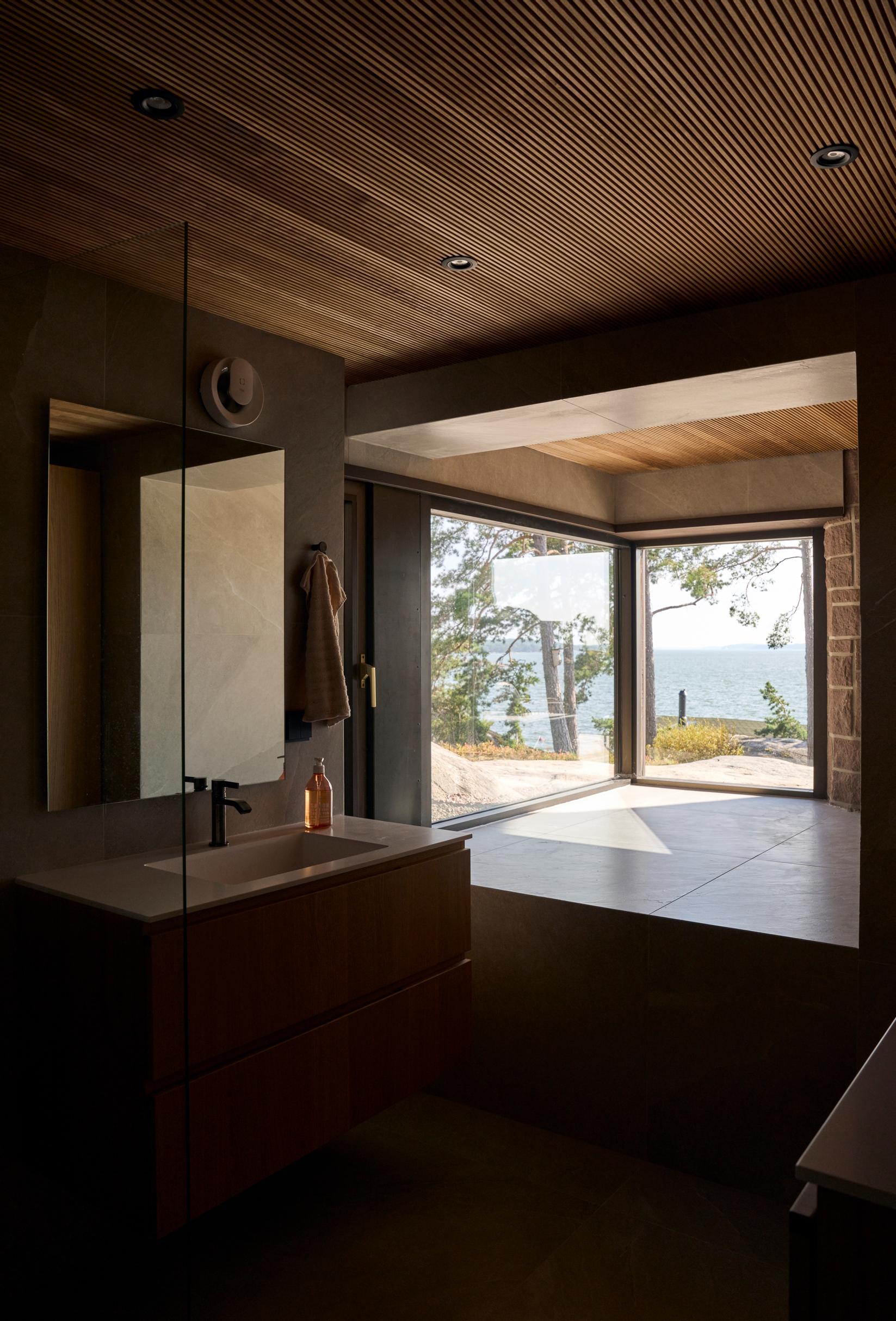
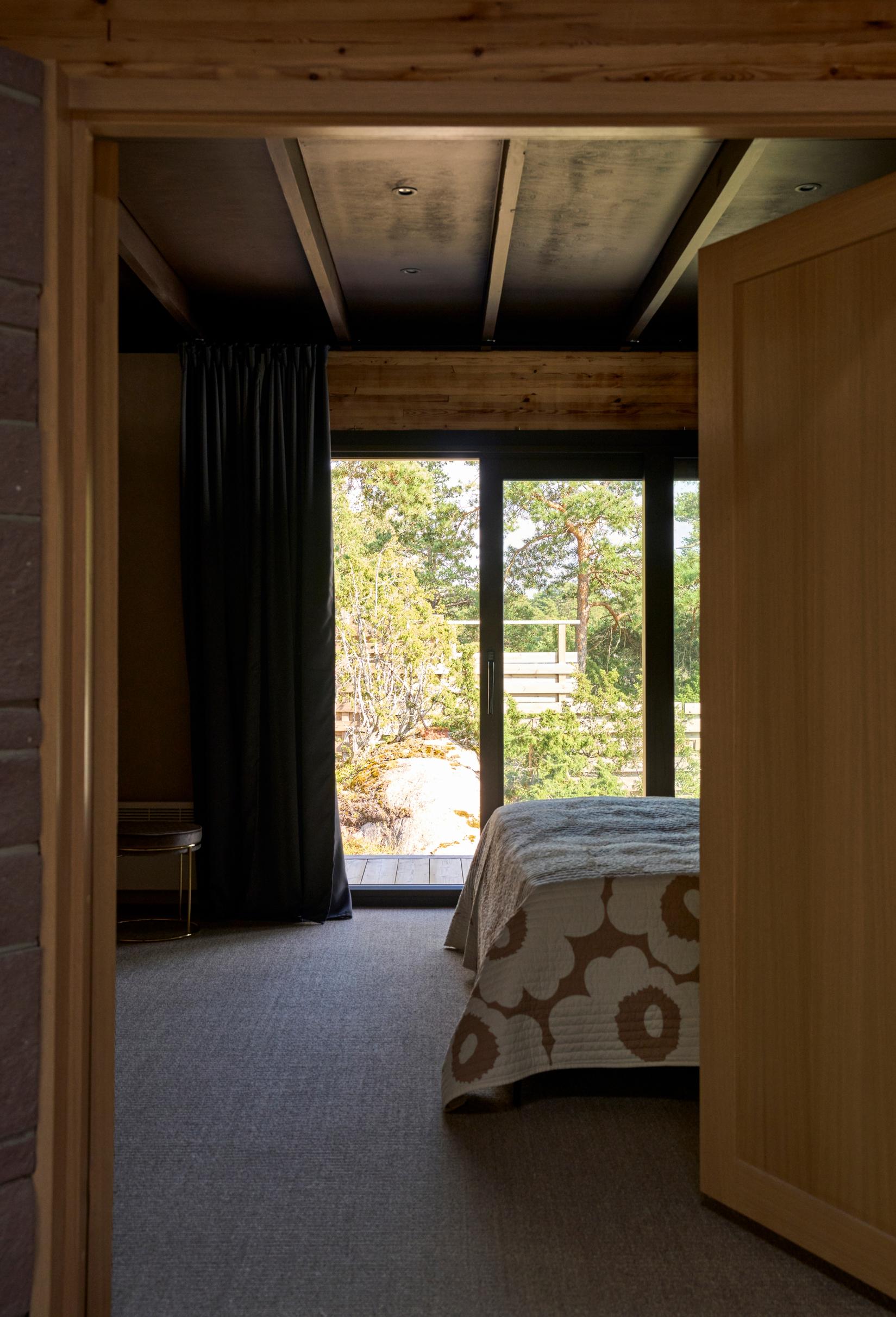
“When everything is quiet around you, it’s easier to recognize what you truly need.”
How does your work as a business coach come through in this space?
In recent years, I’ve started structuring my life around the idea of “health, wealth, and happiness,” and this place is part of that bigger picture. The house is a counterbalance to everyday life—somewhere that simplifies everything. Here, I can recharge, find peace, and let my thoughts settle.
That’s important in my work, too. I coach entrepreneurs who want to grow their businesses while still leaving space for living. I often ask them: “Where do you pause?” Many have no answer.
When everything is quiet around you, it’s easier to recognize what you truly need—and it’s usually not more but less, with higher quality.
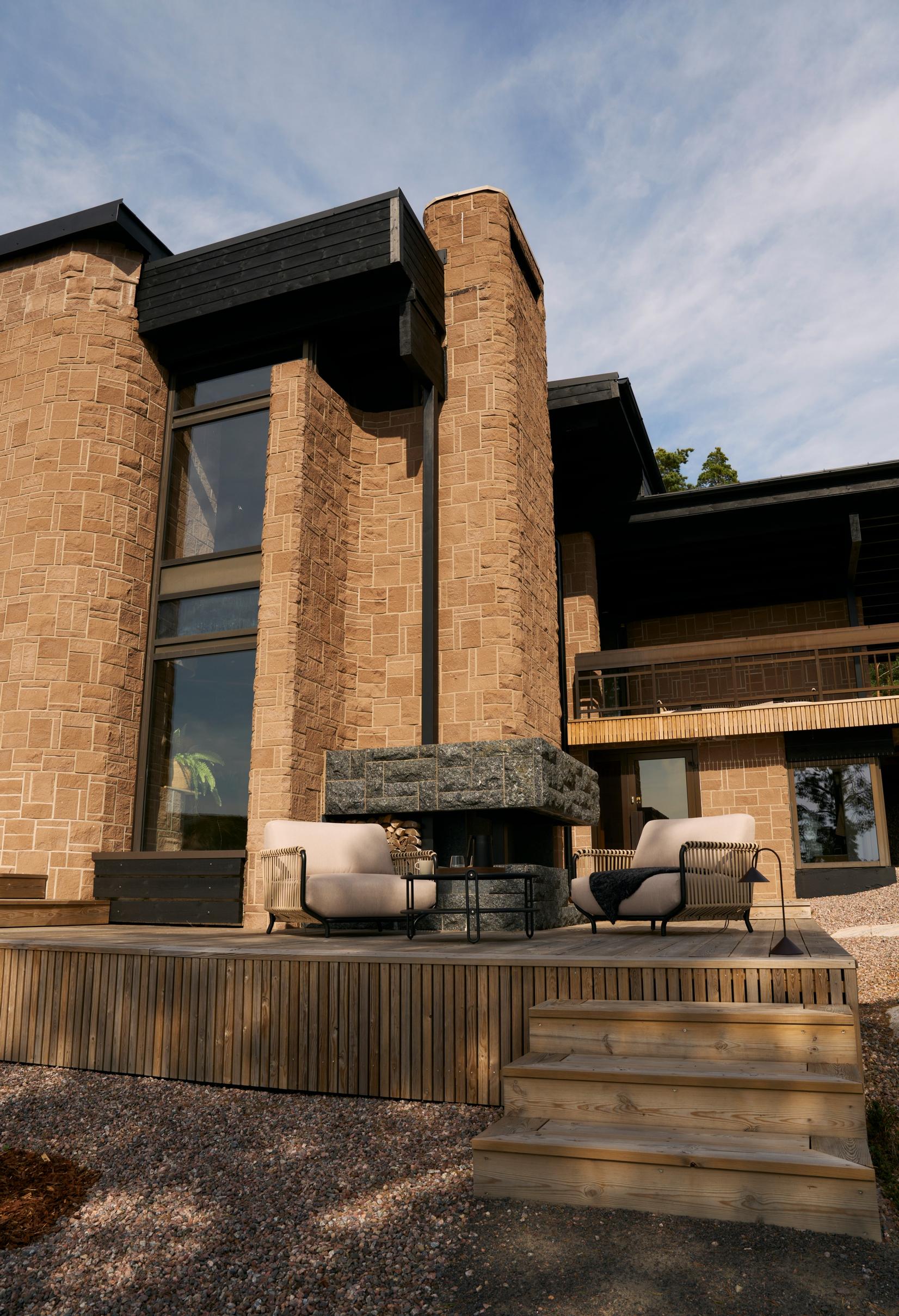
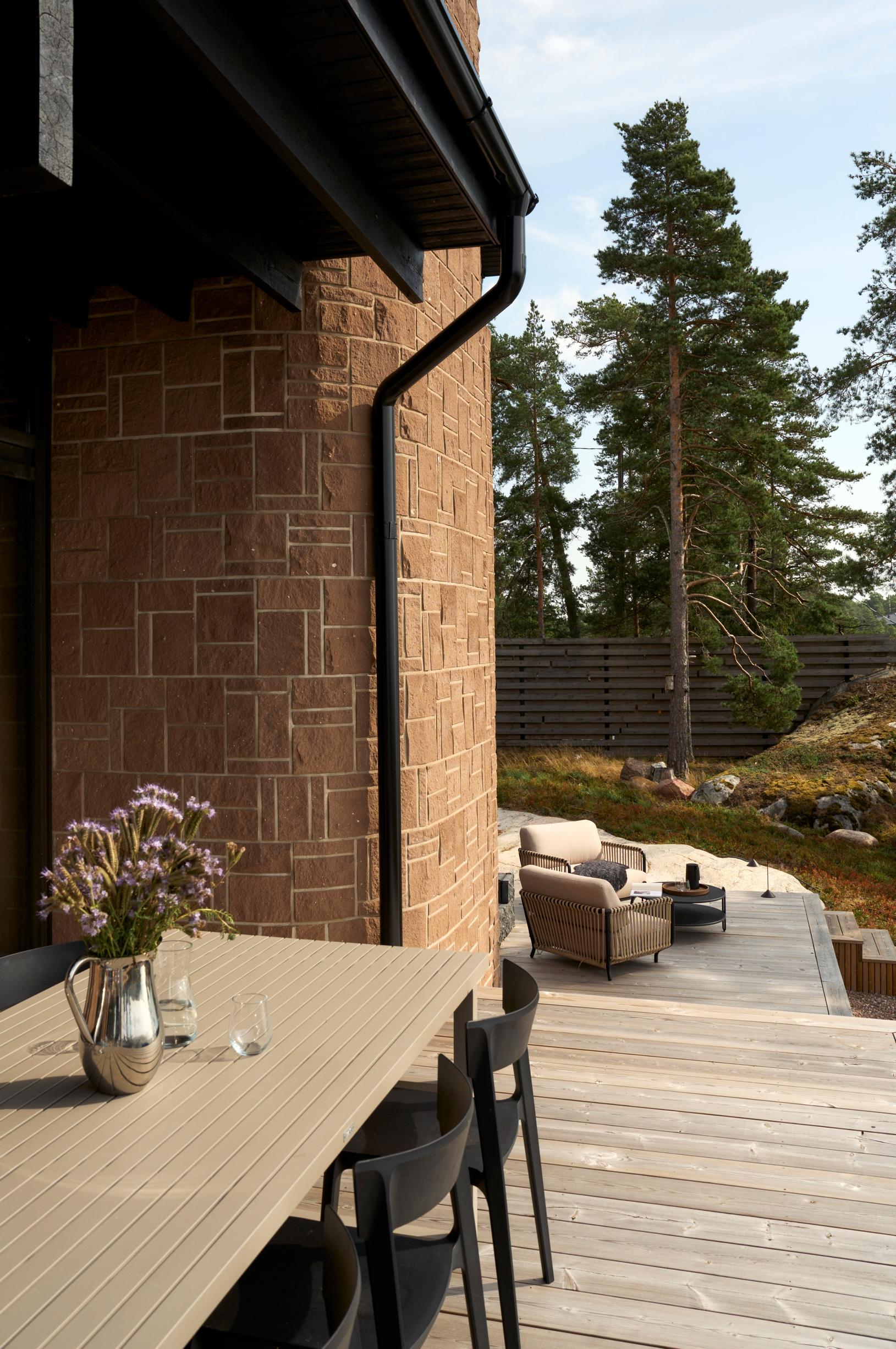
What’s the outdoor environment like?
The house is in a lush environment, where the rugged rock and the greenery of the trees create a peaceful yard. During our first autumn here, we cleared some trees and vegetation to open up the sea view. The landscaping was done according to a plan by horticulturist Minna Toivanen which included woodland turf, stones, and durable plants. The dock was built in stages beside the old beach sauna. All outdoor areas were designed to blend effortlessly into the environment.
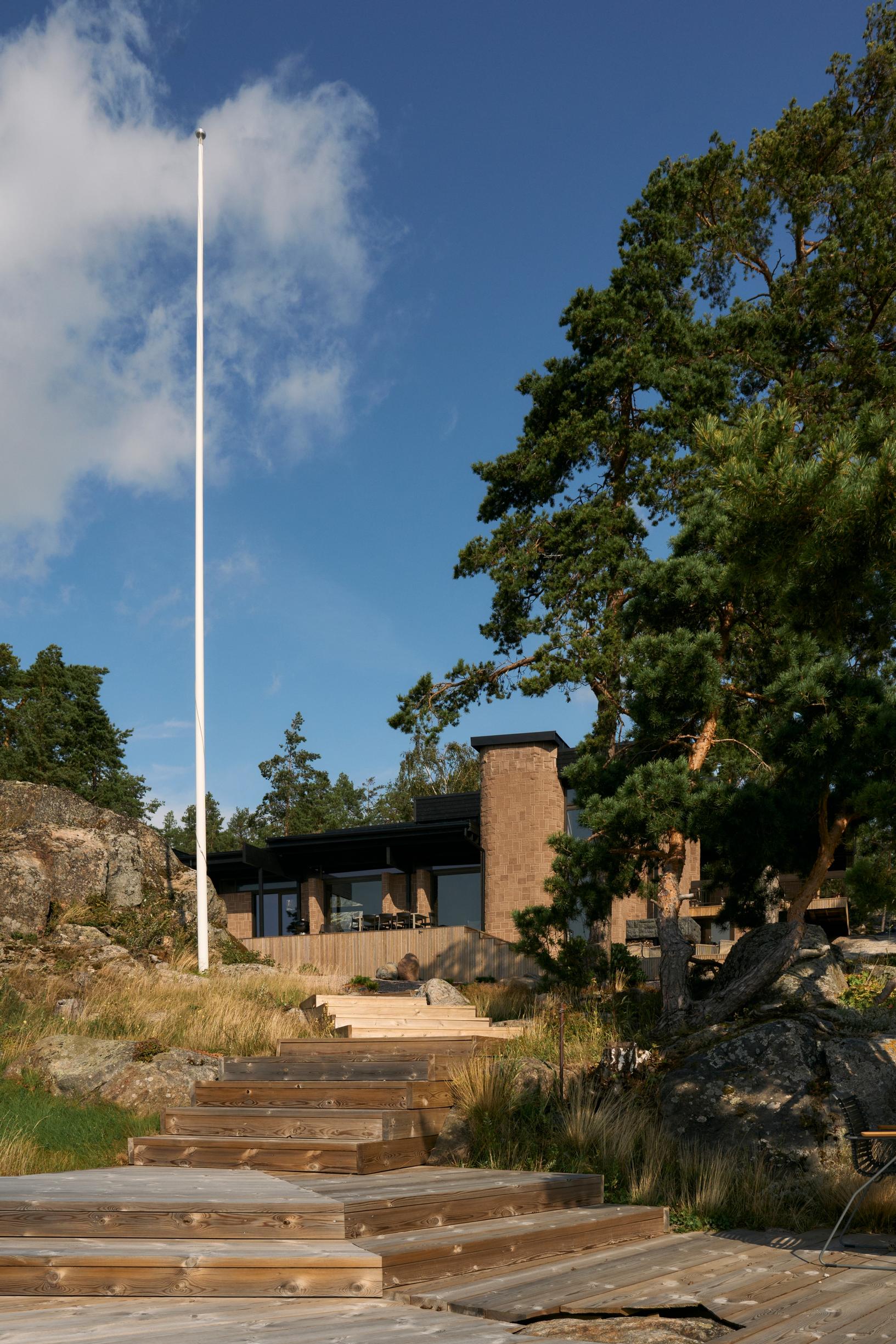
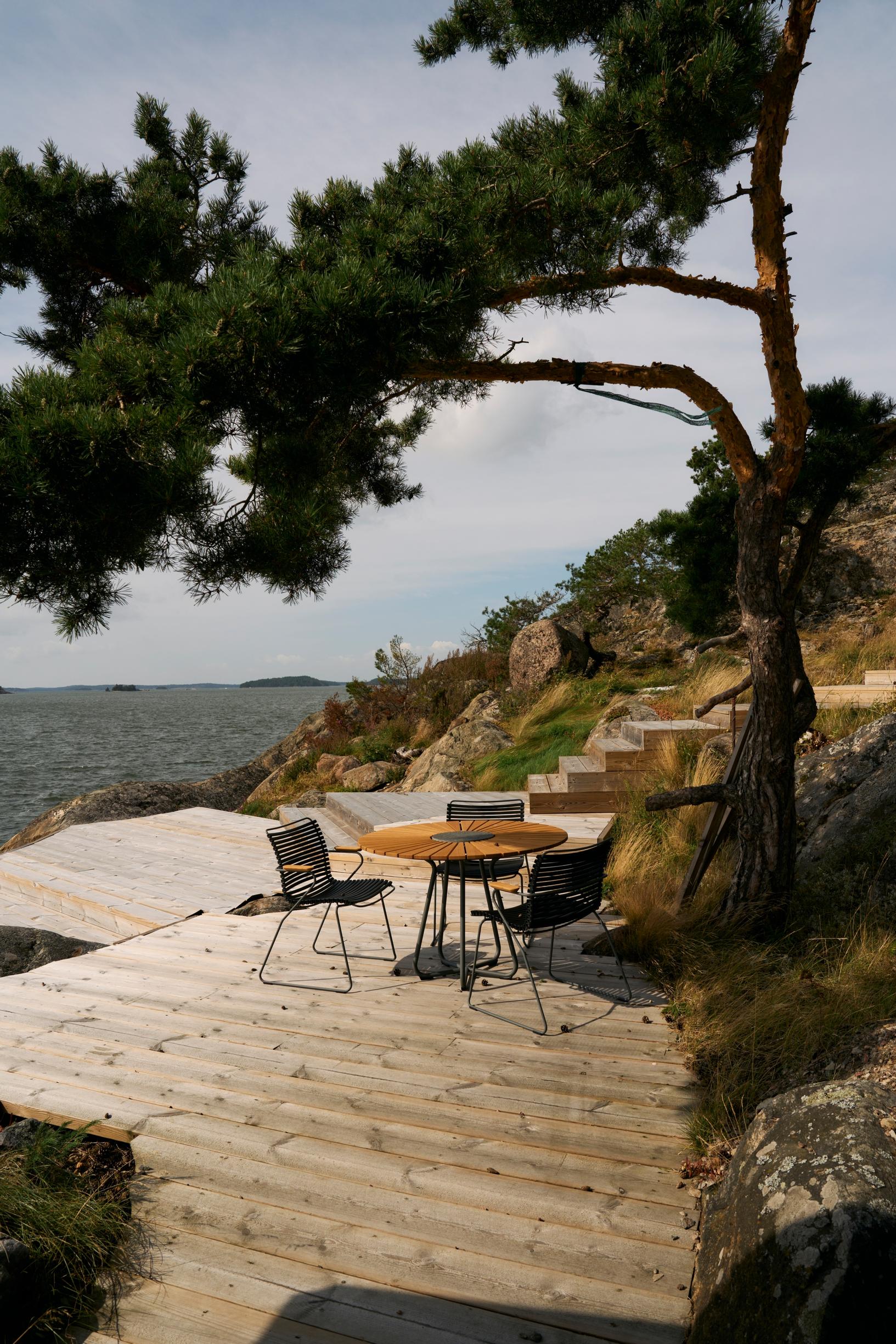
How does the house function with so many people around?
Surprisingly well. Ownership is divided in a clear and practical way. The weeks of June, July, and August are scheduled in advance. In spring, we come here flexibly when it suits everyone.
Everyone shares responsibilities, and we make decisions together. It works because we share the same perspective: we focus on the big picture rather than sweating the small stuff. Each new investment is considered based on actual needs, not on impulse.
The layout of the vacation home means everyone has their own corner: someone might go up to the loft, another to the kitchen nook. In the living room, you can play or read, and the kitchen island naturally draws people in.
